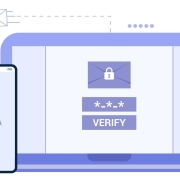Safeguard Your Small Business IT Infrastructure Without Breaking the Bank
Last Updated on March 24, 2023
In today's digital world, small businesses must pay attention to the IT aspects of their operations. Despite misconceptions about the high costs of protecting and maintaining IT infrastructure, many security measures can be implemented without spending a fortune. This article will discuss three simple ways to protect your IT systems from cyber threats on a budget.
Table of Contents
Keep Your Software Up-to-date
Failing to update your software and IT systems can leave your business vulnerable to hackers and cyber attackers. These bad actors often exploit loopholes in outdated technologies. Make it a habit to update your software regularly to avoid such risks. Enable automatic updates if the software allows it, or stay informed about new updates and patches released by vendors. Once you've downloaded these updates, install and test them promptly.
Utilize Built-in Security Measures
Take advantage of the security features built into the IT tools you already own. Here are some basic security practices to follow:
- Use strong, unique passwords for all user accounts.
- Grant administrative privileges only to those who need them
- Familiarize yourself with the Local Group Policy Editor in your Windows operating system to control user and computer settings within your network.
- Windows Defender: A built-in antivirus and anti-malware solution for Windows 10, offering real-time protection and automatic updates.
You can significantly enhance your IT infrastructure's protection by leveraging these built-in security measures.
Secure Your Network With Free Security Tools
After exhausting your existing resources, explore external security tools available for free. Some notable free security tools include:
- Cain and Abel: A password recovery tool that can crack and capture passwords using various methods such as network-packet sniffing and dictionary attacks. It helps identify weak passwords and policy flaws.
- Nikto: An open-source scanner for web servers that identify weaknesses, outdated servers, configuration errors, and vulnerabilities, helping you protect your servers from cyber attacks.
- Aircrack and Kismet: Tools for testing the security of your wireless networks. Aircrack captures wireless network traffic and cracks WPA or WEP encryptions, while Kismet is an intrusion detection system that sniffs out wireless networks.
- Wireshark: A widely-used network protocol analyzer that lets you capture and analyze network traffic, helping you identify potential security issues.
- OpenVAS: A comprehensive vulnerability scanner that detects and analyzes security vulnerabilities in your IT systems, helping you address potential risks.
- pfSense: A powerful open-source firewall and router solution that can be installed on your hardware or run as a virtual appliance, offering advanced security features.
- Nmap: A popular network discovery and security auditing tool that can be used to scan networks, identify devices, and uncover potential security risks.
Following these simple steps, you can effectively safeguard your small business's IT systems without straining your budget. Investing time in learning and implementing these measures can save you from the costly consequences of cyber attacks. Furthermore, consider contacting IT professionals for guidance and support on IT security tailored to your business needs.
Bonus Tips
Educate Your Employees on Cybersecurity Best Practices
Employee awareness and training are crucial in safeguarding your business from cyber threats. Invest time in educating your staff about cybersecurity best practices and establishing a security culture within your organization. Some key areas to cover include:
- Identifying and avoiding phishing emails and other social engineering attacks
- Using strong, unique passwords and enabling multi-factor authentication (MFA) for all accounts
- Understanding the importance of regular software updates and how to apply them
- Following safe browsing habits and avoiding suspicious websites or downloads
- Adhering to your organization's security policies and procedures
For a more in-depth look at IT security tips for your business, check out our 5 Business IT Security Tips article.
Regularly Backup Your Data
Data loss can be catastrophic for a small business. Therefore, it's essential to implement a regular backup strategy to protect your valuable data from accidental deletion, hardware failure, or ransomware attacks. Consider the following tips for an effective backup plan:
- Perform regular backups of all critical data, including documents, emails, and databases.
- Store backup copies in multiple locations, including offsite and cloud, to ensure redundancy.
- Test your backups periodically to ensure data can be restored when needed.
- Develop a disaster recovery plan to guide your organization through recovering data and restoring normal operations after a data loss incident.
Learn more about disaster recovery planning by reading our Disaster Recovery Planning Guide.
Implement Network Access Controls
Restricting access to your business network can significantly reduce the risk of unauthorized access and data breaches. Implement network access controls to ensure that only authorized users and devices can connect to your network. Some strategies include:
- Creating a separate guest Wi-Fi network for visitors, keeping your primary network secure
- Implementing Virtual Private Networks (VPNs) for remote employees to access your network securely
- Deploying firewalls to monitor and control incoming and outgoing network traffic based on predetermined security rules
- Using network segmentation to separate sensitive data and critical systems from the rest of the network
Need help with network security? Our team of IT professionals can assist you in setting up and maintaining a secure network for your small business.
By incorporating these additional steps into your IT security strategy, you'll be better equipped to protect your small business from cyber threats without breaking the bank. Remember that the time and effort invested in securing your IT infrastructure can save your organization from the potentially devastating consequences of a cyber attack.










Leave a Reply
Want to join the discussion?Feel free to contribute!